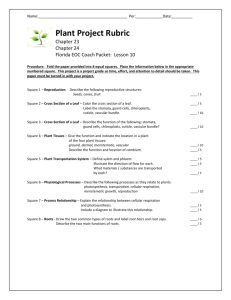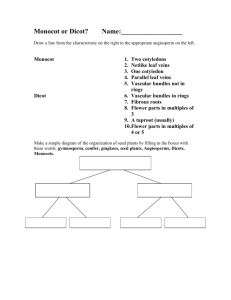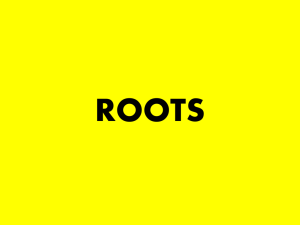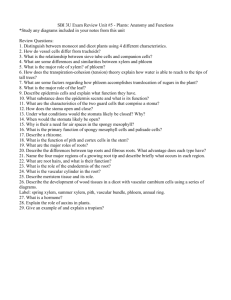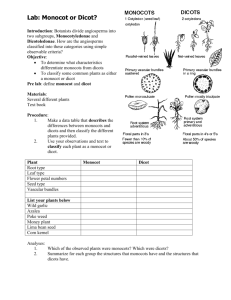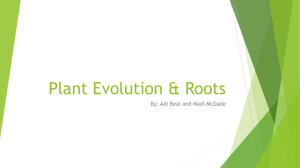The Structure of a Monocot Root
advertisement
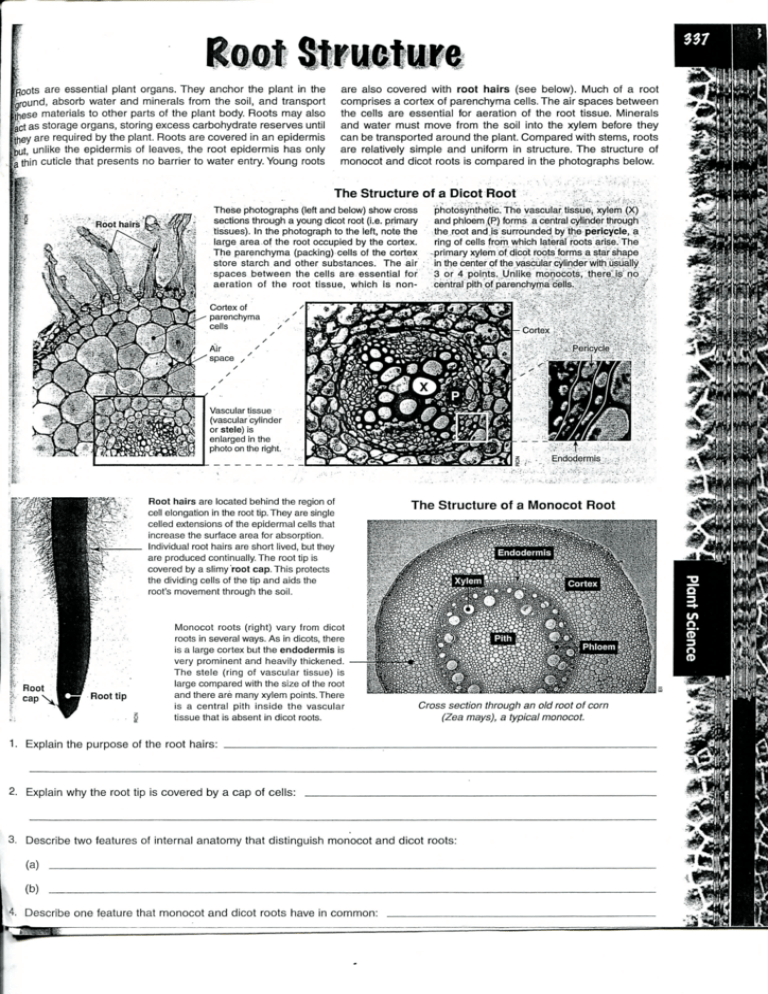
are essential plant organs. They anchor the plant in the jround, absorb water and minerals from the soil, and transport materials to other parts of the plant body. Roots may also ict as storage organs, storing excess carbohydrate reserves until are required by the plant. Roots are covered in an epidermis >ut, unlike the epidermis of leaves, the root epidermis has only [thin cuticle that presents no barrier to water entry. Young roots are also covered with root hairs (see below). Much of a root comprises a cortex of parenchyma cells. The air spaces between the cells are essential for aeration of the root tissue. Minerals and water must move from the soil into the xylem before they can be transported around the plant. Compared with stems, roots are relatively simple and uniform in structure. The structure of monocot and dicot roots is compared in the photographs below. The Structure of a Dicot Root These photographs (left and below) show cross sections through a young dicot root (i.e. primary tissues). In the photograph to the left, note the large area of the root occupied by the cortex. The parenchyma (packing) cells of the cortex store starch and other substances. The air spaces between the cells are essential for aeration of the root tissue, which is non- : photbsynthetic. The vascular tissue; xylem (X) and phloem (P) forms a central cylinder through the root and is surrounded by the pericycle, a ring of cells from which lateral roots arise. The ^primary xylem of dicot roots forms a star shape in the center of the yascuiar cylinder with usually 3 or 4 points, Unlike monqcots, thercjs'; no,, .central pjthof parenchyrna cells. ; V :'"r'- •-:•:.>-• Cortex of parenchyma celts Cortex iBericycie/: Air space Vascular tissue (vascular cylinder or stele) is enlarged in the photo on the right. Endodermis Root hairs are located behind the region of cell elongation in the root tip. They are single celled extensions of the epidermal cells that increase the surface area for absorption. Individual root hairs are short lived, but they are produced continually. The root tip is covered by a slimy'root cap. This protects the dividing cells of the tip and aids the root's movement through the soil. Monocot roots (right) vary from dicot roots in several ways. As in dicots, there is a large cortex but the endodermis is very prominent and heavily thickened. The stele (ring of vascular tissue) is large compared with the size of the root and there are many xylem points. There is a central pith inside the vascular tissue that is absent in dicot roots. The Structure of a Monocot Root K Cross section through an old root of corn (Zea mays), a typical monocot. 1. Explain the purpose of the root hairs: 2. Explain why the root tip is covered by a cap of cells: 3. Describe two features of internal anatomy that distinguish monocot and dicot roots: (a) (b) 4. Describe one feature that monocot and dicot roots have in common: an •

